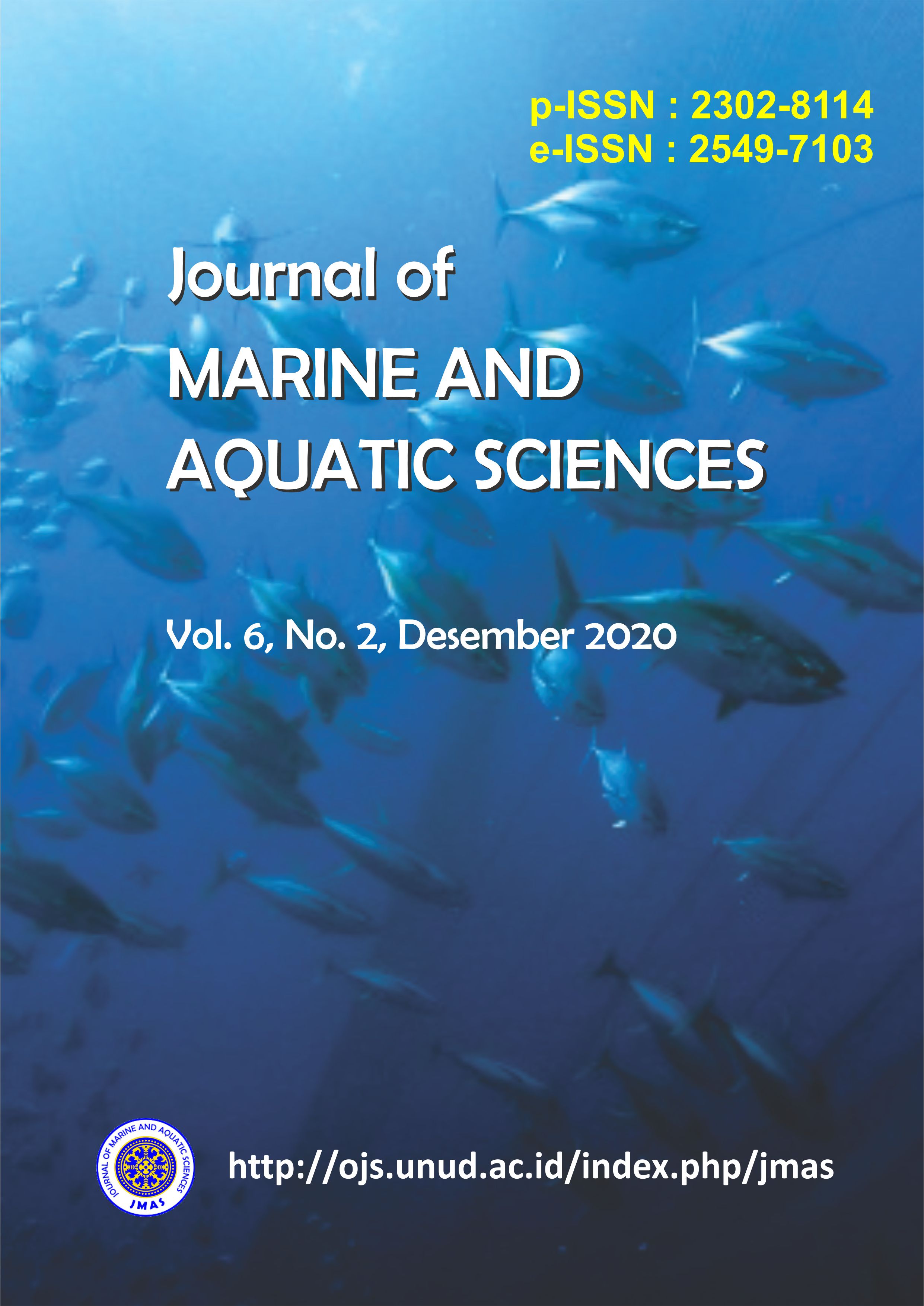Accumulation Of Heavy Metal Lead (Pb) And Cadmium (Cd) In Halophila ovalis And Thalassia hemprichii As Agents Of Phytoremediation In South Serangan
Abstract
Seagrass ecosystem is part of the marine ecosystem that has quite important ecological role. Halophila ovalis and Thalassia hemprichii are seagrass species have the potential to become an agent of phytoremediation by determining the concentration of heavy metals Pb and Cd that have accumulated in them. This study was conducted in January 2018 in Southern Serangan Beach. The purpose of investigating the concentration of heavy metals in water, sediments, roots and leaves of seagrass and determine the bioaccumulation, translocation character and can be made as an agent for phytoremediation. The method used is purposive random sampling method, determined by 3 point. The point is determined from the condition closest to the port Benoa to the outermost point the bay mouth. Determination of station points is considering the presence of the most seagrasses. Results obtained in this study obtained average Pb concentration in water 0.0521 ppm, average metal Cd 0.1652 ppm, the average sediment Pb 75.8574 ppm, Cd 15.33593 ppm, concentration of Pb and Cd in roots and leaves of H. ovalis and T. hemprichii respectively Pb 42.4940 ppm, 45.5334 ppm, and 35.6207 ppm, 38.3931 ppm. Metal Cd 12.9708 ppm 14.8581 ppm Bioaccumulation value of seagrass is accumulator plants. Value of Pb and Cd translocation factors in seagrass H. ovalis (phyto-extraction) seagrass T. hemprichii Pb (phyto-extraction) and Cd (fitostabilization) phytoremediation values by both types of seagrass are greater in remediating heavy metal cadmium, meaning that both types of seagrass are better used for phytoremediation agents of heavy metal cadmium.
Downloads

This work is licensed under a Creative Commons Attribution 3.0 International License.
Copyright 2012 - 2023 Journal of Marine and Aquatic Sciences (JMAS)
Published by Fakultas Kelautan dan Perikanan Universitas Udayana, Denpasar, Bali, Indonesia
JMAS (p-ISSN 2302-8114; e-ISSN 2549-7103)


